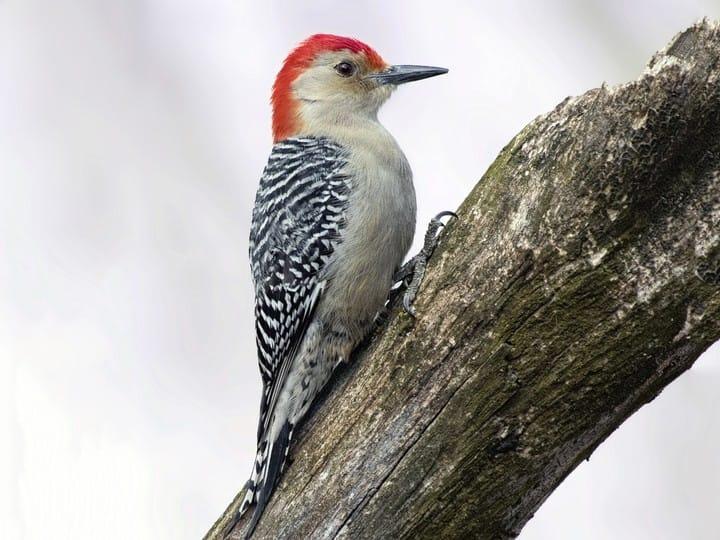Experiencing Woodpeckers in Florida: Types Diversity and Recognition
Experiencing Woodpeckers in Florida: Types Diversity and Recognition
Blog Article
Unveiling the Secrets of Woodpeckers: Behavior, Habitat, and Extra
Woodpeckers, with their one-of-a-kind actions and specialized adjustments, have actually lengthy fascinated researchers and nature lovers alike. By discovering the enigmas bordering woodpeckers' habits and environment options, a deeper understanding of these avian wonders arises, supplying a glance right into their interesting world.
Woodpecker Habits Insights
In analyzing woodpecker habits, an interesting display of specialized skills and adjustments arises, clarifying their amazing ecological niche - Woodpeckers in Florida. Woodpeckers, recognized for their distinctive drumming on trees, possess a selection of behavior qualities that contribute to their survival and success in their environment. One vital habits is their drumming, which serves multiple objectives such as interaction, establishing region, bring in friends, and finding food sources. This balanced pecking likewise showcases their remarkable toughness and endurance, as they can hammer away constantly at broadband without creating damage to themselves.
In addition, woodpeckers show an one-of-a-kind feeding behavior identified by their ability to remove insects from tree bark utilizing their specialized beaks. Their long, barbed tongues aid in recording prey, while their strong neck muscle mass provide stability and accuracy during pecking movements. This feeding strategy enables woodpeckers to accessibility covert insect larvae and remove them with remarkable effectiveness.
Environment Preferences and Selection
What variables influence the habitat choices and selection of woodpeckers? Woodpeckers are highly versatile birds recognized to occupy different settings worldwide. However, they do display choices for sure environment qualities. One critical factor influencing woodpecker habitat choice is the schedule of ideal nesting sites. Woodpeckers normally favor forests with a mix of mature trees that offer sufficient chances for dental caries excavation. These dental caries function as essential nesting and roosting sites for woodpeckers and are vital for their breeding success.
In addition, woodpeckers reveal a choice for environments with an abundant supply of food sources. They are largely insectivorous, feeding on beetles, ants, larvae, and other insects discovered in decaying wood or tree bark. Therefore, woodpeckers tend to prefer woody areas with a diverse insect populace to fulfill their nutritional requirements.
Furthermore, the presence of dead or worn out trees is one more essential consider woodpecker environment choice. These trees not only give food resources but additionally supply appropriate substrate for dental caries excavation. Dead trees are necessary for the maintenance i was reading this of healthy and balanced woodpecker populations, as they play an essential function in the woodpeckers' life cycle and ecological community characteristics.
Feeding Practices and Diet Regimen Structure
Woodpeckers demonstrate a specialized feeding actions concentrated on foraging for pests within different environments. Their diet plan largely is composed of insects such as beetles, ants, caterpillars, and spiders, which they situate by tapping on tree bark and paying attention for the sound of motion inside. Woodpeckers use their solid beaks to pierce into the timber and their long, barbed tongues to remove prey from gaps. Along with pests, woodpeckers also eat tree sap, fruits, nuts, and seeds, adding range to their diet regimen depending upon the period and availability of food resources.
The foraging techniques of woodpeckers are well-adapted to their arboreal lifestyle (Woodpeckers in Florida). Their capability to excavate wood not only supplies them with food however additionally aids in developing nesting cavities and establishing territories. Woodpeckers play an important function in preserving the health and wellness of woodlands by managing insect populations and aiding in the decay of wood. Comprehending their feeding routines and diet plan structure is necessary for preservation efforts targeted at protecting these distinct and important birds.
Drumming Appears and Interaction
Using rapid drumming sounds on numerous surfaces, woodpeckers employ a distinct type of communication to signal region limits and attract friends. This drumming habits is not only a means of interaction however also serves as a means for woodpeckers to develop their existence within a certain area. The intensity, rate, and pattern of the drumming can communicate essential details to various other woodpeckers in the area.
Woodpeckers utilize drumming audios to reveal their presence in a region and to caution off potential trespassers. The loud and repetitive nature of the drumming acts as a clear signal to other woodpeckers that the location is already asserted. This assists in reducing disputes and minimizing physical battles between people.

Survival Adaptations and Specialized Anatomy

Conclusion
To conclude, woodpeckers exhibit unique behaviors, such as drumming sounds for interaction, and have specialized anatomy for survival in their chosen environments. Their feeding routines and diet plan composition better show their versatility to various settings. By understanding these aspects of woodpeckers, scientists and guardians can read review better shield and protect these fascinating birds and their ecosystems.
Report this page